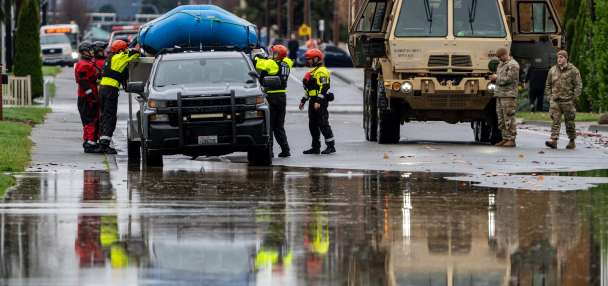Estimated read time: 3-4 minutes
- Utah and the Navajo Nation finalized a landmark water rights agreement, granting 81,500 acre-feet of water annually.
- The agreement aims to improve water infrastructure and access within the Navajo Nation.
- Tribal and state leaders see this as a significant step toward a sustainable future for the Navajo Nation.
SALT LAKE CITY — Utah and the Navajo Nation have finalized a landmark water rights agreement.
A state judge signed an interlocutory decree late last month to formally transfer annual water rights totaling 81,500 acre-feet of water to the Navajo Nation, marking the final step in a long process that started over two decades ago. The state will also transfer the last of $8 million that it pledged to help Navajo Nation officials pay for future water development projects.
"Today is a day for celebration," said Navajo National Councilwoman Shaandiin Parish, moments before leaders from both sides — some holding copies of the decree — gathered for a photo together at the Utah Capitol on Wednesday to commemorate the agreement.
The agreement, she says, will help residents have water for brushing their teeth, showering and all the "necessities" tied to water that others take for granted.
A long time coming
The Navajo Nation — located within parts of Utah, Arizona and New Mexico — has long fought for water access, especially since it was excluded from the Colorado River Compact in 1922. Over a century later, only about half of the homes of the now 6,000 members on the Utah portion of the reservation have running water and indoor plumbing.
"Unfortunately, I can say that's the case throughout the Navajo Nation," said Michelle Espino, its chief legislative counsel. "It's almost 40% of our homes nationwide that are without water."
Efforts to address these issues picked up over the past two decades, but it has taken time and many people to improve the situation.
In Utah's case, "deliberate, formal negotiations" over a water agreement began in 2003 before an agreement was reached in 2015, said Teresa Wilhelmsen, Utah's state engineer and director of the Utah Division of Water Rights.

Federal officials approved that agreement five years later, and it was ratified by state leaders in 2021. Their agreement received another boost in 2022, as the Navajo-Utah Water Rights Settlement Agreement received funds from the Bipartisan Infrastructure Law. It included $220 million in federal funding and $8 million in state funding for water infrastructure.
"This shows that we can do hard things if we're patient enough and we're willing to stay at the table," said Lt. Gov. Deidre Henderson. "We can't change the past, but we can change the future — and that's what we're doing today."
The future of Navajo Nation water
While the agreement is life-changing, tribal and state leaders say it's also just the beginning. Wednesday's ceremony coincided with other issues Navajo leaders came to the state Capitol to address, including a proposed road and child protection laws. Thus, Parish says the decree is "one step in the right direction," but there are more issues that still need to be settled.
Joel Ferry, director of the Utah Department of Natural Resources, said it's also just the beginning of a "shared responsibility" among all water users to ensure that water resources last as the region continues to deal with drought and supply shortages.
Yet, both sides say the agreement also marks a key moment for the reservation.
"I see this as, truly, being the first major step in a sustainable future for the Navajo Nation," Ferry said.
Utah's settlement follows a similar agreement with New Mexico that also took a long time to complete, as it was finalized last year after an agreement in 2009. Espino said the nation is also working toward a similar settlement with Arizona.
With deals now complete in two out of three states, tribal leaders are concidering ways to advance water development within the reservation. These include more running water for homes and restoring lost farms.
"This settlement is so important to help us move forward so that we can finally fulfill our goal, our vision to provide water to all of the Navajo Nation who are lacking water," Espino said.









